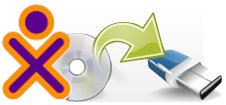Difference between revisions of "Supported systems"
m (adjust Merge template discuss link) |
Inkyfingers (talk | contribs) (As a temporary *demonstration* measure hide distro-specific material and add "distributions" sub page index) |
||
| Line 61: | Line 61: | ||
==Updating Sugar to the Latest Version== | ==Updating Sugar to the Latest Version== | ||
| − | + | <!--- | |
[[File:Ubuntu.jpg|link=Community/Distributions/Ubuntu]] | [[File:Ubuntu.jpg|link=Community/Distributions/Ubuntu]] | ||
| Line 221: | Line 221: | ||
===Mandriva=== | ===Mandriva=== | ||
To install Sugar on Mandriva follow these [[Community/Distributions/Mandriva#Setup|instructions]]. | To install Sugar on Mandriva follow these [[Community/Distributions/Mandriva#Setup|instructions]]. | ||
| + | ---> | ||
| + | |||
| + | == Distributions Index == | ||
| + | |||
| + | This is the index of [[Community/Distributions]] and it lists the pages on GNU/Linux distributions, where Sugar is supported. | ||
| + | |||
| + | {{Special:PrefixIndex/Community/Distributions/}} | ||
Revision as of 22:03, 29 June 2012
| It has been suggested that this article or section be merged with Community/Distributions. (Discuss) |
See Sugar System Stack for a picture of the software stack.
Ways to run Sugar
Determine which of the various methods of running Sugar meet your needs:
- Pre-installed Sugar:
- Some computers come with Sugar pre-installed, most notably the OLPC XO-1 laptop.
- Live CD / Live USB:
- Suitable for trying Sugar without having to install any software on almost any computer—just boot Sugar off of a CD or USB drive. Note: When booting a Live CD, the Journal is not automatically saved on shutdown, because the boot media is readonly. All changes are lost upon shutdown or reboot. This is not a limitation for Live USB installations. See our Sugar on a Stick project page.
- Install Sugar:
- If you are running one of the currently supported distributions, you can install Sugar using your systems standard package manager, e.g., Synaptic, apt-get, or yum.
- Make custom Fedora F11/F12 Sugar Install or Live DVD/CD's [1]
- Emulator/Virtualizer:
- QEMU, VirtualBox, or VMware let you run Sugar in an emulator or by virtualization on your computer—you'll need to install an emulator from which you launch Sugar and one of the Emulator image files.
Refer to the matrix below to find a Sugar solution that works for you.
Computer labs
- Bill Kerr has written up instructions for trying Sugar in computer labs which run only Windows
- (Please see [2].)
- Caroline Meeks is developing a deployment model that only requires one USB stick per child. (Please see Sugar on a Stick.)
Matrix of Sugar solutions
There are many ways to run Sugar:
- As a complete disk image on an existing machine;
- As a session on a Linux system; or
- As part of a complete hardware-software platform.
Technical considerations
- A discussion of technical considerations regarding supported systems.
Starch
Starch is a complete disk image for Sugar.
Sucrose
Sucrose is the Sugar interface plus a set of demonstration activities. System maintainers should visit the Packaging Team page.
Sugar for various hardware systems
Since Sugar is now available on most major GNU/Linux distributions, it is possible to run Sugar almost any computer that can run GNU/Linux. We highlight some systems below. Please add your favorite to the list.
MacBook Air
OSX 10.6.6 (Virtualbox 4.0.2)Emulator_image_files#VirtualBox VirtualBox runs on most hardware and OS's
Works well in VirtualBox including wireless and magic mouse
Burned Soas.iso for Soas-v4 and Soas-v3 boot fine
Downloads#Apple_Mac_OS_X Apple Mac OS X
Sugar on a Stick/Mac
Getting the Sugar sources
Distributors can find the latest sources for the sucrose components here. Each release page has as links to the release pages of earlier releases.
Updating Sugar to the Latest Version
Distributions Index
This is the index of Community/Distributions and it lists the pages on GNU/Linux distributions, where Sugar is supported.
